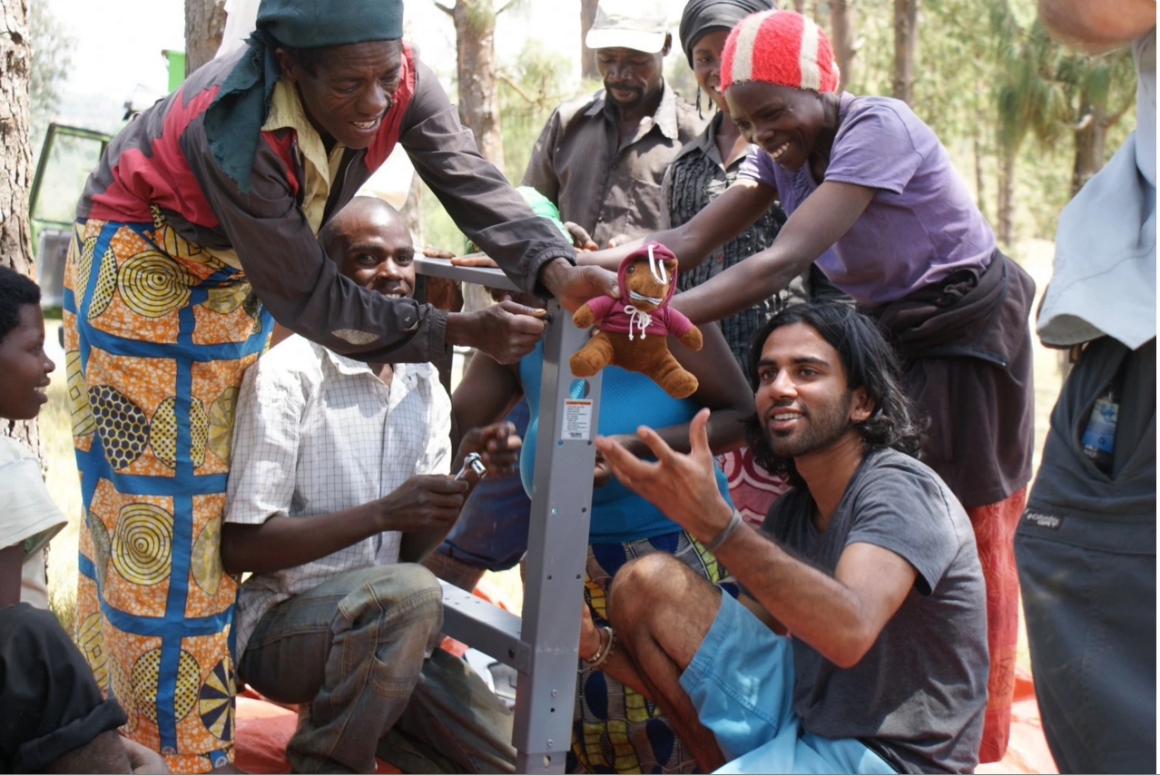
Pass the Wrench, Please
Senior bioengineering student Mohit Nalavadi wrote the following for Grade Point, a higher education news blog at washingtonpost.com, where it was published on December 3.
The stop-and-go traffic of my 30-minute commute from Santa Clara, Calif. to Mountain View, Calif. gives me a front-row seat to an engineer’s dream: the shiny tech headquarters of the likes of Google, Microsoft, and countless little startups with names like MuleSoft and Okta.
There's a certain energy you feel when you're in Silicon Valley; the spur of cutting-edge technology and the idea of disrupting the status quo is everywhere. But too often, the promise of materializing great ideas feels jaded, stamped with the obligatory, starry-eyed mission statement of "making the world a better place."
So when I entered my freshman year at Santa Clara University, on the angsty heels of high school mixed with the impending uncertainty of figuring out life's purpose, I resolved to do something tangible with my four years.
It didn't take long to find Engineers Without Borders. EWB is different from most college organizations. Our mission is to apply the engineering skills we learn in school to help developing communities gain a better quality of life.
At university, while a lot of peers were celebrating Pi-Day with a delicious array of baked goods, or perfecting online profiles at LinkedIn workshops, we were iterating designs of a system to deliver clean water to a rural community in Honduras, or sculpting our next funding pitch, or developing an education curriculum so the community could adapt to its changing water infrastructure.
Motivation for this work was never hard to find. Through Skype calls, we could see the faces of the people we were affecting, and hear their voices echo across the globe, carrying words of communion and gratitude.
That gratitude was mutual because the Honduran community was changing the way I saw my role in the world.
All my life, the classroom felt limited. But EWB is dynamic. We are in the field, strategizing our next move, building, testing, and rebuilding, succeeding at times, failing at others, but constantly making decisions. You only learn by doing.
As the Honduras project closed, we moved forward to a new community, Nyange, in Rwanda, where people had asked for a more efficient way to make clay roof tiles. We spent a year building a bike-powered clay-mixer, tile-press, and accompanying education curricula.
It took months of fundraising and a handful of 2 a.m. Skype calls. Then we spent two weeks in Rwanda, implementing our system, meeting with government and university officials, and striving to see life through the lens of another culture.
And though Murphy's Law seemed to meet us at every stage of the trip, it always led us to the inexplicable joy of problem solving.
We arrived at Nyange early, eager to build the tile-press with the community and create the first tile.
Back in Santa Clara, we had rehearsed a method to build the press; we would show how the tools work, build the first half, and have them build the second half. This would allow the community to understand how the machine works and how to maintain the system.
After showing how to screw in just two bolts, one woman, Mediatrice, reached for the wrench still in my hand. Her eyes spoke without words, "I can do that." Incredulity and happiness merged in a way I didn't know possible. I let go.
Guiding the others, she proceeded to screw in bolts while positioning others’ hands to hold the different components. Mediatrice later spoke to me through our translator. She said that the people of Nyange wanted to be self-sufficient, but they didn’t have the means.
All the wealth is concentrated in the cities outside of Nyange, and it never finds its way in, and so time is left standing still.
All they need is a catalyst.
Even though her words were translated and maybe they lost some essence, they still weighed with the enormous gravity of the situation that surrounded us. It was the most incredible illustration of the resilience of the human spirit I have ever seen in my 21 years.
And so I landed back in San Francisco sometime later, in my little bubble, contemplating this experience.
I still drive down 101, looking at all the tech companies, wondering if "making the world a better place" is just a worn-out marketing campaign—or whether it is handing someone a wrench and saying, "You can do this."
Photo: Mohit Nalavadi ’16 looks on as the women of Nyange, Rwanda, take over assembly of the SCU student-designed tile-press. Photo Credit: James Reites, S.J.